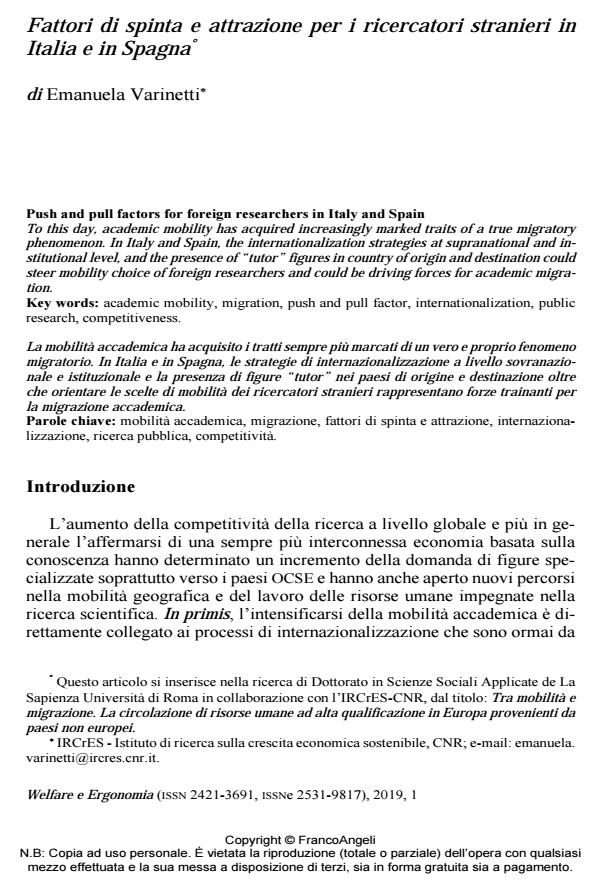Push and pull factors for foreign researchers in Italy and Spain
Journal title WELFARE E ERGONOMIA
Author/s Emanuela Varinetti
Publishing Year 2020 Issue 2019/1
Language Italian Pages 12 P. 139-150 File size 225 KB
DOI 10.3280/WE2019-001012
DOI is like a bar code for intellectual property: to have more infomation
click here
Below, you can see the article first page
If you want to buy this article in PDF format, you can do it, following the instructions to buy download credits

FrancoAngeli is member of Publishers International Linking Association, Inc (PILA), a not-for-profit association which run the CrossRef service enabling links to and from online scholarly content.
To this day, academic mobility has acquired increasingly marked traits of a true migratory phenomenon. In Italy and Spain, the internationalization strategies at supranational and in-stitutional level, and the presence of "tutor" figures in country of origin and destination could steer mobility choice of foreign researchers and could be driving forces for academic migra-tion.
Keywords: Academic mobility, migration, push and pull factor, internationalization, public research, competitiveness.
Emanuela Varinetti, Fattori di spinta e attrazione per i ricercatori stranieri in Italia e in Spagna in "WELFARE E ERGONOMIA" 1/2019, pp 139-150, DOI: 10.3280/WE2019-001012